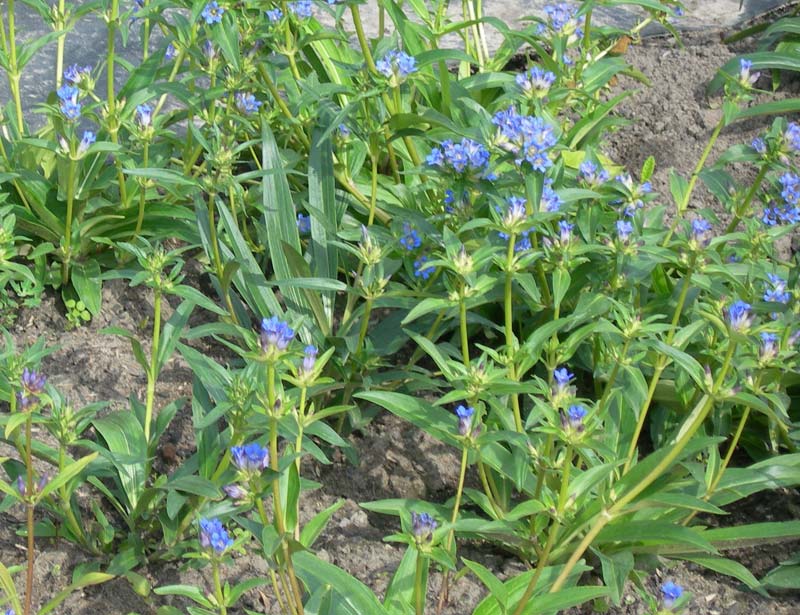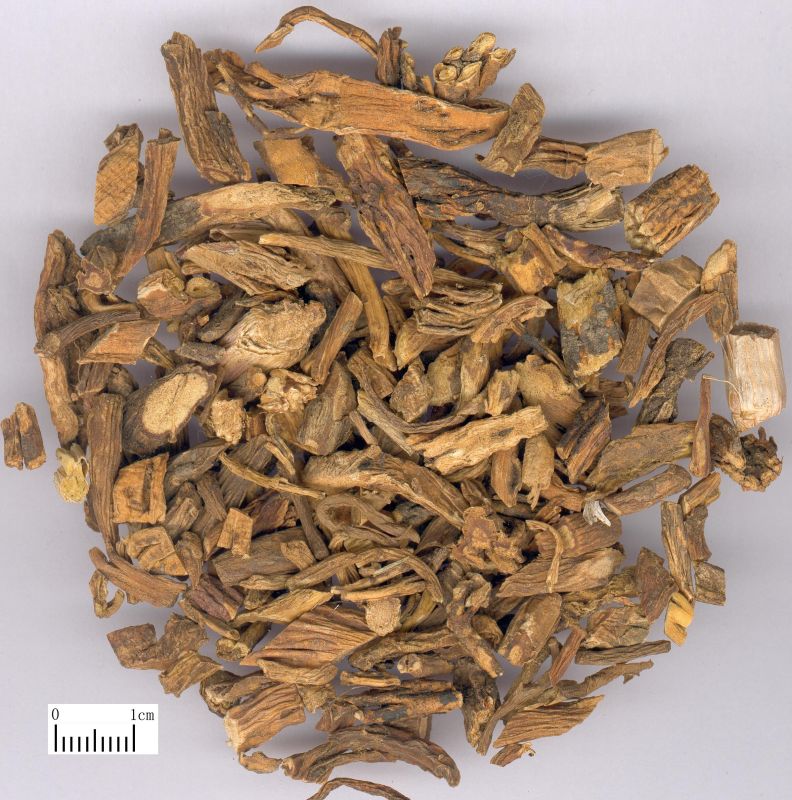- Hot painful obstruction, with
Anemarrhena
asphodeloides- Zhi mu and
Lonicera
japonica- Ren dong teng.
[3]
- Wind Cold Damp painful obstruction with
Ledebouriella
divaricata- Fang feng,
Angelica pubescens-
Du huo and
Notopterygium incisum-
Qiang huo.
[3]
- Fever of steaming bone disorder, afternoon fever, and other low-grade fevers
due to Yin deficiency associated with the aftermath of a long-term illness.
Use with
Pelodiscus sinensis- Bie jia,
Artemisia annua- Qing hao and
Lycium chinense- Di gu pi.
[3]
- Hemiplegia, especially with hypertonicity of the upper extremities, presenting
with symptoms of Blood deficiency. Use with
Angelica
polymorpha- Dang gui and
Paeonia lactiflora-
Bai shao.
[3]
- Damp Heat induced jaundice, especially in children, with
Scutellaria
baicalensis- Huang qin and
Atractylodes
lancea- Cang zhu.
[3]
- Constipation due to dry Intestines, with
Cannabis
sativa- Huo ma ren and
Cannabis sativa-
Yu li ren.
[3] [1] A Complete English Dictionary of Medicinal
Terms in Chinese Acupuncture and Herbalism 1981- Henry Lu Chinese Foundations
of Natural Health- The Academy of Oriental Heritage, Vancouver, Canada.
[2] Translation notes from Gary Seiford and Hocu Huhn- NSW College of Natural
Therapies. Sydney Australia.
[3] Chinese Herbal Medicine Materia Medica- Dan Bensky and Andrew Gamble- Eastland
Press 1986 Seattle Washington ISBN 0-939616-15-7
Images
1.
flower.onego.ru
2.
tcm100.com Gentianine, gentianidine, alkaloids.[1]
Gentianine is a relavitely safe chemical. The LD50 in mice is 480
mg/kg orally.[1] Humans taking a relatively
high dose of this herb have developed nausea and vomiting.[1]
References
[1] Chinese Herbal Medicine Materia Medica- Dan Bensky and Andrew Gamble- Eastland
Press 1986 Seattle Washington ISBN 0-939616-15-7
 Gentiana
macrophylla. 秦
艽 Qín
jiāo Gentiana
root Family: Gentianaceae
Gentiana
macrophylla. 秦
艽 Qín
jiāo Gentiana
root Family: Gentianaceae
